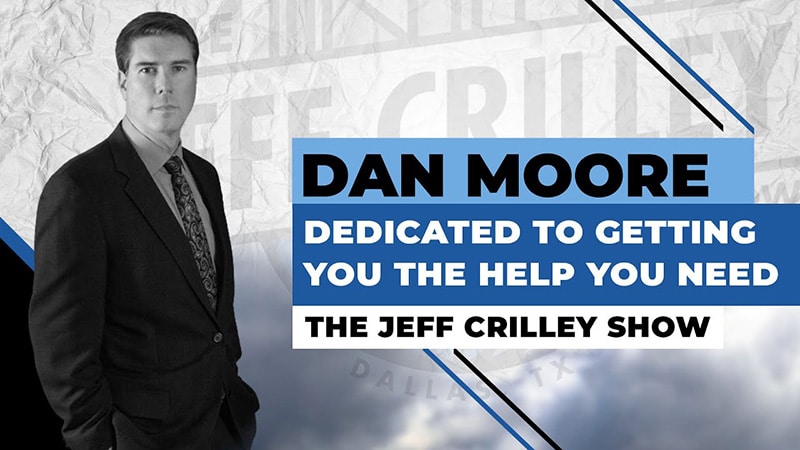Are you a vehicle owner in Texas who recently experienced an accident? If so, you may be entitled to compensation for the diminished value of your car. Filing a strong diminished value claim can help you recover the financial loss caused by the accident, but navigating the process can be complex. That’s why we’ve created the ultimate guide to filing a strong diminished value claim in Texas.
In this guide, you’ll learn everything you need to know about how to file a successful claim, step-by-step. We’ll cover the specific requirements for filing a claim in Texas, the necessary documentation you’ll need to gather, and the tactics you can use to strengthen your case. Whether you’re dealing with a minor scrape or a major collision, our guide will arm you with the knowledge and strategies needed to maximize your compensation.
Don’t let the insurance companies take advantage of you. With our comprehensive guide, you’ll be equipped to file a strong diminished value claim and receive the compensation you deserve.
Keywords: file a strong diminished value claim, Texas, ultimate guide, compensation, vehicle owner, financial loss, accident, navigate, process, complex, requirements, documentation, strengthen case, tactics, maximize compensation, insurance companies.
Understanding diminished value claims
Diminished value is the reduction in the resale value of a vehicle after it has been involved in an accident. Even if a vehicle has been fully repaired, potential buyers may still perceive it as less valuable due to its accident history. Diminished value claims aim to compensate vehicle owners for this loss in value.
When you file a diminished value claim, you are essentially seeking compensation for the difference between the pre-accident value of your vehicle and its post-repair value. This compensation is meant to cover the financial loss you incur when selling or trading in your vehicle, as well as the stigma associated with an accident history.
Understanding the concept of diminished value is crucial before proceeding with your claim. By familiarizing yourself with the basics, you’ll be better equipped to present a strong case and negotiate a fair settlement.
The importance of filing a strong diminished value claim
Filing a strong diminished value claim is essential for several reasons. First and foremost, it allows you to seek fair compensation for the financial loss you’ve experienced. Without a strong claim, the insurance company may try to minimize or deny your claim, leaving you to shoulder the burden of the diminished value.
Furthermore, filing a strong claim can help protect your rights as a consumer. Insurance companies are often focused on minimizing their own costs and may not have your best interests at heart. By filing a strong claim, you’re asserting your rights and demanding fair treatment.
A strong diminished value claim also sets a precedent for future claims. When more vehicle owners assert their rights and file strong claims, insurance companies may be forced to reevaluate their approach to handling diminished value claims. By setting this precedent, you can contribute to a fairer system for all vehicle owners.

Texas laws and regulations regarding diminished value claims
Before filing a diminished value claim in Texas, it’s important to understand the specific laws and regulations that govern this type of claim. While Texas does not have specific statutes that address diminished value claims, there are legal principles that can be applied to support your case.
One important legal principle in Texas is the duty of good faith and fair dealing. This means that insurance companies have an obligation to handle claims in a fair and reasonable manner. If you can demonstrate that the insurance company has acted in bad faith or has not fulfilled their duties, it can strengthen your diminished value claim.
Additionally, Texas follows the rule of comparative negligence. This means that if you were partially at fault for the accident, your compensation may be reduced proportionately. Understanding these legal principles can help you navigate the claims process and build a strong case.
Steps to take after a car accident to support your diminished value claim
After a car accident, there are several important steps you should take to support your diminished value claim. These steps will help establish the extent of the damage and ensure that you have the necessary documentation to back up your claim.
- Document the accident scene: Take photos of the accident scene, including the damage to your vehicle and any other vehicles involved. This visual evidence can be crucial in establishing the severity of the accident and the resulting diminished value.
- Obtain a police report: If law enforcement was called to the scene of the accident, make sure to obtain a copy of the police report. This report can provide additional documentation of the accident and may include important details that support your claim.
- Seek medical attention: Even if you don’t think you’re seriously injured, it’s important to seek medical attention after an accident. Some injuries may not be immediately apparent, and having a medical record can help establish the impact of the accident on your overall well-being.
- Notify your insurance company: Contact your insurance company as soon as possible to report the accident. Even if you’re filing a claim against the at-fault driver’s insurance, it’s important to keep your own insurance company informed.
- Consult with an attorney: If you’re unsure about the claims process or need guidance on how to proceed, it may be beneficial to consult with an attorney who specializes in personal injury and property damage claims. They can provide expert advice and advocate for your rights.
By following these steps, you can gather the necessary evidence to support your diminished value claim and increase your chances of a successful outcome.
Gathering evidence for your diminished value claim
To strengthen your diminished value claim, it’s crucial to gather the appropriate evidence. The more evidence you have, the stronger your case will be, and the more likely you are to receive fair compensation. Here are some key pieces of evidence to gather:
- Vehicle history report: Obtain a vehicle history report that details the accident history of your vehicle. This report will provide documentation of the accident and any repairs that have been made.
- Repair estimates and invoices: Keep records of any repair estimates and invoices related to the accident. These documents will demonstrate the extent of the damage and the repairs that were necessary.
- Appraisal reports: Consider obtaining one or more appraisal reports from qualified professionals. These reports will provide an expert opinion on the diminished value of your vehicle and can carry significant weight in your claim.
- Comparable sales data: Research recent sales of similar vehicles in your area to establish the market value of your vehicle both before and after the accident. This data can help support your claim for diminished value.
- Photographic evidence: Take detailed photos of the damage to your vehicle, both before and after repairs. These photos can provide visual evidence of the impact of the accident on your vehicle’s value.
By gathering and organizing this evidence, you’ll be able to present a strong case for diminished value and increase your chances of receiving fair compensation.

Calculating the value of your diminished value claim
Calculating the value of your diminished value claim can be a complex process. There are several methods that can be used, depending on the circumstances of your accident and the specific details of your vehicle. Here are a few common approaches:
- 17c formula: The 17c formula is a widely used method for calculating diminished value. It takes into account factors such as the age of the vehicle, the severity of the damage, and the mileage. However, it’s important to note that insurance companies may use their own formulas, which may not align with the 17c formula.
- Market research: Conducting market research can help you determine the value of your vehicle before and after the accident. By comparing recent sales of similar vehicles, you can estimate the percentage decrease in value caused by the accident.
- Professional appraisal: Hiring a professional appraiser can provide an accurate assessment of the diminished value of your vehicle. These appraisers have expertise in evaluating the impact of accidents on vehicle value and can provide an expert opinion that carries weight in your claim.
It’s important to note that insurance companies may dispute the value you calculate. They may argue that the diminished value is less than what you claim or even deny your claim altogether. By gathering strong evidence and considering multiple valuation methods, you can support your calculated value and negotiate for fair compensation.
Writing a persuasive demand letter for your diminished value claim
Once you have gathered all the necessary evidence and calculated the value of your diminished value claim, it’s time to write a persuasive demand letter to the insurance company. This letter will outline your case and request fair compensation for the diminished value of your vehicle.
Here are some key elements to include in your demand letter:
- Introduction: Start by introducing yourself and providing a brief overview of the accident and the resulting diminished value.
- Summary of evidence: Outline the evidence you have gathered, including repair estimates, appraisal reports, and comparable sales data. Clearly and concisely present the facts that support your claim.
- Calculations: Detail how you arrived at the calculated value of your diminished value claim. Explain the methodology you used and present the evidence that supports your calculations.
- Legal arguments: Reference the relevant laws and legal principles that support your claim. Highlight any duty of good faith and fair dealing violations or comparative negligence issues that strengthen your case.
- Demand for compensation: Clearly state the amount of compensation you are seeking for your diminished value claim. Justify this amount based on the evidence and calculations you have presented.
- Deadline for response: Set a reasonable deadline for the insurance company to respond to your demand letter. This will ensure that your claim is not left unresolved for an extended period.
By writing a clear and persuasive demand letter, you can effectively communicate the strength of your claim and increase your chances of a fair settlement.
Negotiating with the insurance company for a fair settlement
Once you have submitted your demand letter, it’s likely that the insurance company will respond with a counteroffer or a denial of your claim. This is where negotiation skills become crucial in securing a fair settlement for your diminished value claim.
Here are some tips for negotiating with the insurance company:
- Stay calm and professional: Maintain a calm and professional demeanor throughout the negotiation process. Emotions can cloud judgment and hinder effective communication.
- Be prepared to counter: If the insurance company responds with a low counteroffer, be prepared to counter with a higher amount based on your calculations and evidence. Present your counteroffer in a clear and rational manner.
- Consider seeking legal representation: If the negotiation process becomes challenging or the insurance company is not acting in good faith, it may be wise to seek legal representation. An attorney experienced in diminished value claims can advocate for your rights and negotiate on your behalf.
- Document everything: Keep detailed records of all communication with the insurance company, including emails, letters, and phone calls. This documentation can be valuable if your claim needs to be escalated or if legal action becomes necessary.
Remember that negotiation is a process, and it may take time to reach a fair settlement. Stay persistent and assertive, and don’t be afraid to seek professional help if needed.
Hiring a professional diminished value appraiser
If you want to strengthen your diminished value claim, hiring a professional diminished value appraiser can be extremely beneficial. These appraisers specialize in evaluating the impact of accidents on vehicle value and can provide an expert opinion to support your claim.
When hiring a professional appraiser, consider the following:
- Credentials and experience: Look for appraisers who have the necessary credentials and experience in diminished value appraisals. Check for certifications or affiliations with reputable organizations.
- Reputation and track record: Research the appraiser’s reputation and track record. Read reviews or testimonials from previous clients to get a sense of their expertise and professionalism.
- Cost: Consider the cost of hiring a professional appraiser and compare it to the potential value of your diminished value claim. In many cases, the benefits of hiring an appraiser outweigh the cost.
By working with a professional appraiser, you can present a strong, expert opinion on the value of your diminished value claim, increasing your chances of a fair settlement.

Conclusion: Taking action and protecting your rights as a consumer
Filing a strong diminished value claim in Texas requires understanding the process, gathering strong evidence, and effectively negotiating with insurance companies. By following the steps outlined in this guide, you can navigate the complex claims process and maximize your chances of receiving fair compensation for the diminished value of your vehicle.
Remember, don’t let the insurance companies take advantage of you. Arm yourself with knowledge, gather the necessary evidence, and assert your rights as a consumer. By taking action and filing a strong diminished value claim, you can protect your financial interests and ensure that you receive the compensation you deserve.












